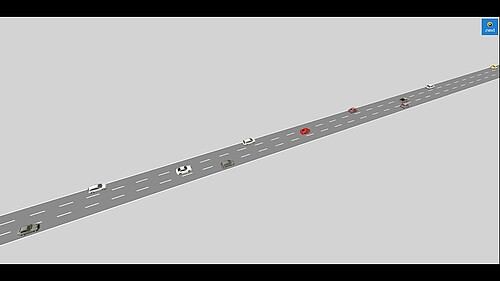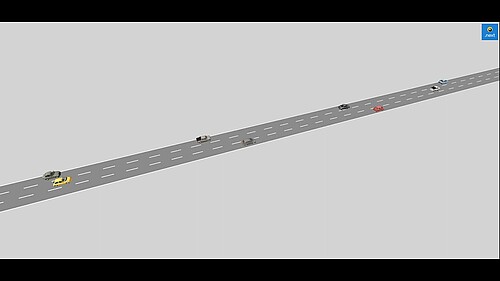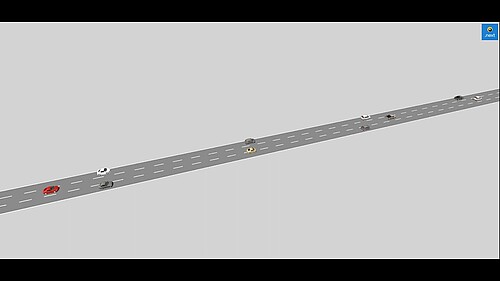Video Playlist 8. Optimization-based path-planning for connected and non-connected automated vehicles
The videos included in this playlist are part of the results discussed in the paper titled "Optimization-based path-planning for connected and non-connected automated vehicles". In the specific work, vehicle trajectories are generated by solving an optimal control problem in a model predictive control framework. The goal of each vehicle is to achieve a fixed desired speed, while ensuring the safety and comfort of the passenger. For the simulation investigations, two cases were considered, each of them at different penetration rates of i) non-connected automated vehicles and ii) connected automated vehicles (CAVs). All simulations and the corresponding videos have been performed using the Aimsun micro-simulation platform, considering a homogeneous motorway stretch and different lane-capacity utilizations. Specifically, the included videos show the connected automated vehicles' behavior for two demand levels, i.e. 3,000 veh/h and 5,000 veh/h, both for 100% penetration rate of CAVs. It is evident from the videos that the above optimal control problem formulation is conceived for American freeway traffic rules, whereby vehicles may use any lane at any speed and may overtake on the left or right. Adoption of European driving rules, where overtaking is only from left, may be easily accommodated.
100% CAVs for demand level of 3000 veh/h
In a simple scenario, where the demand level under consideration is low (3000 veh/h), it can be observed that faster automated vehicles have enough space to easily maneuver around slower vehicles, in order to reach or maintain their desired speed.

100% CAVs for demand level of 5000 veh/h
For a demand level of 5000 veh/h, where the safe space for overtaking is limited, less maneuvering from automated vehicles is expected compared to the lower demand levels. Thus, the current video illustrates how the automated vehicles, at a higher demand level, mainly maintain their safety space gap, and manage to overtake slower vehicles with the first opportunity. It can be observed that the vehicles’ movement is fairly smooth.

100% CAVs for demand level of 5000 veh/h (emergency rule)
In this case, few abrupt reactions can be observed (see golden vehicle). This behavior is due to the application of an emergency rule, which ensures the vehicle’s safety by dropping any unsafe produced trajectory and regenerating a new one with reduced desired speed and planning horizon. This rule is necessary as, under extreme conditions, e.g. high density or big difference between vehicles desired speed, the possibility of a collision cannot be utterly excluded.

